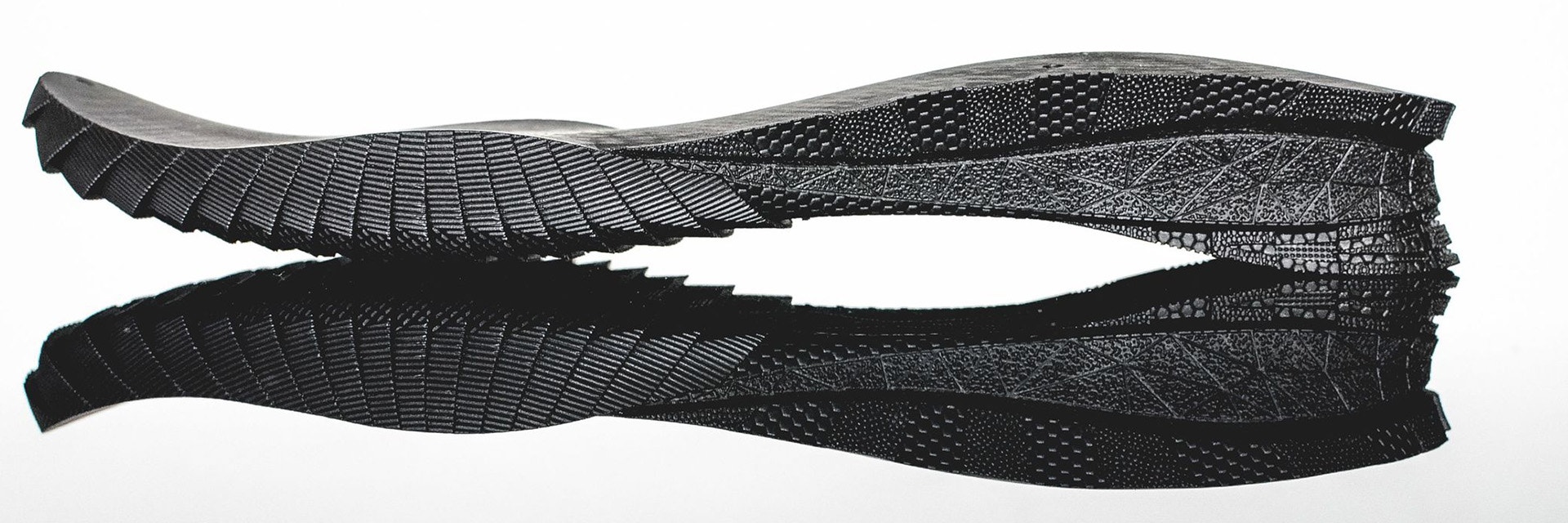사례 연구
Texturing 453 Surfaces of a Shoe Sole: Discover Texturing
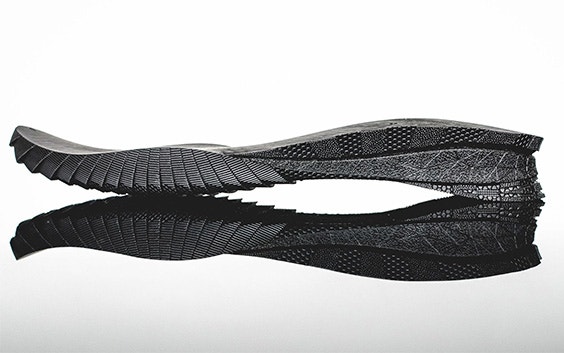
Shoe manufacturers often use a master to cast the soles of the shoe. Instead of creating a mold for each type of sole, the bigger shoe manufacturers nowadays 3D print the soles. Manually assigning a texture to each surface area takes a lot of time. In addition, you end up with huge STL file sizes that your computer can no longer handle.
Materialise software guides the shoe manufacturer from design to printed part in a time- and cost-efficient way, allowing them to take full advantage of the disruptive possibilities of 3D printing.
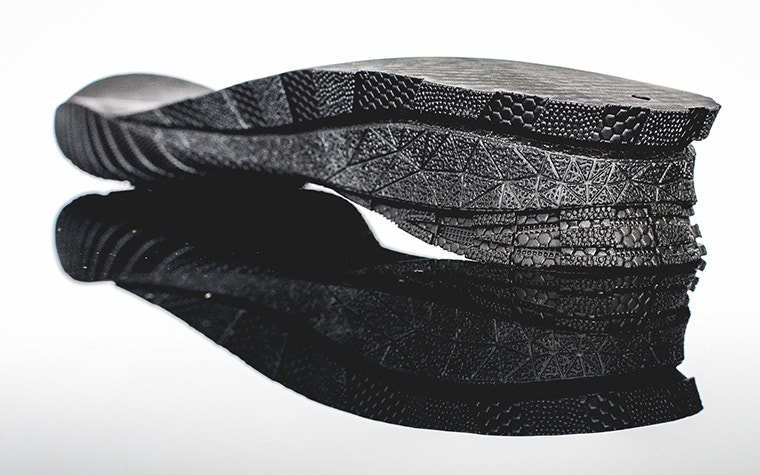

A 3D-printed, textured master for casting
Discover how four solutions from the Materialise software backbone give shoe manufacturers a shortcut to repair the worst file errors, texture hundreds of surfaces, automatically generate support and finally keep those huge data sets manageable.
Texturing: 80% time savings
Applying textures one by one demands massive amounts of time when you need to texture around 1,000 surfaces. With the texturing module of Materialise 3-matic, hundreds of surfaces that need the same type of texture can be grouped in surface sets and textured with one click. In this shoe sole 453 surfaces were nicely textured and aligned, saving at least 80% of time compared to 1-by-1 texturing.
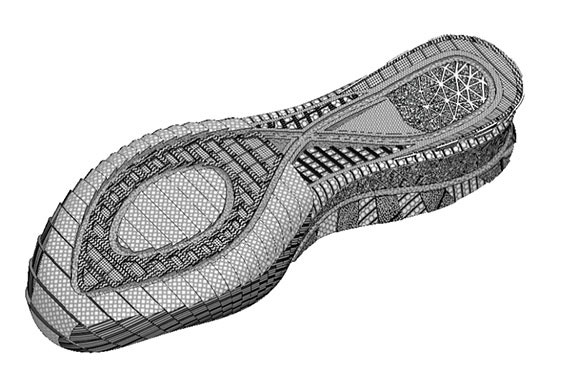

Data preparation: automatically repair
To print the shoe in the most cost-efficient way, we created a hollow version of the model and added holes for resin drainage. In addition, Materialise Magics was used to position the shoe sole on the build platform in an optimal way.
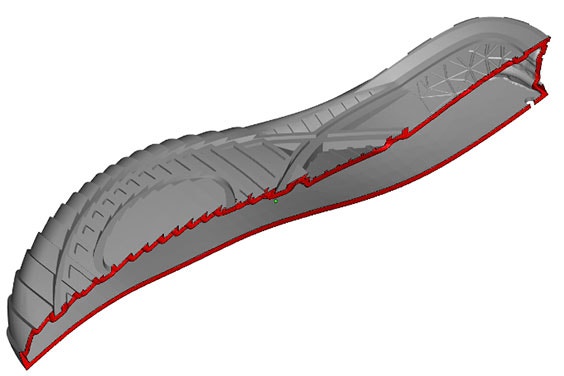

Automatic support generation: save 20 minutes per part
Manually generating support is a very labor-intensive job. With the automated support generation tool e-Stage, the support preparation time was significantly reduced. Using Materialise e-Stage can reduce data preparation time by up to 20 minutes per part, depending on the complexity and size of the part. The support was not limited to the outside, but also supported certain hollow regions inside the shoe. Thanks to minimal contact points, the finishing time was reduced as well.


Slice-based data processing: 5.8MB instead of 2GB
Applying textures or structures to a model can easily result in very large STL files which become difficult to manipulate, store and transfer. Thanks to the slice-based technology of the Build Processor, the demanding triangle creating to an intermediate STL file was skipped. The desired geometry was generated directly onto the slices, thus avoiding large data. 453 surfaces were textured on a 5.8 MB size STL file, resulting in a slice stack of only 50 MB. Thanks to the slice-based technology an STL file of around 2 GB could be avoided.


The final result was this stunning textured master!


공유 위치:
이 사례 연구를 간단히 요약
- Shoe manufacturing industry
- Consumer goods
- Materialise 3-matic
- Materialise Magics
- Materialise e-Stage
- Materialise Build Processor
- Apply mass texturing instead of 1-by-1 texturing
Create a highly detailed master (including 453 textured surfaces) for casting a shoe sole
도움을 준 방법
레티스를 생성하고, 텍스처를 생성을 통해 미적 마감처리를 하고, post-toplology 최적화를 달성하세요.
다양한 재료, 기술 및 지오메트리에 맞는 옵션으로 서포트 생성을 최적화하고 자동화할 수 있습니다.
장비별 전략에 따라 작업을 슬라이싱하여 3D 프린터로 보내거나 소프트웨어 개발 키트를 사용하여 맞춤형 스캔 경로 전략을 최적화할 수 있습니다.
업계 최고의 데이터 및 빌드 준비 소프트웨어로 생산 효율성을 개선하고 반복 작업을 자동화하며 프린팅 성공률을 최적화하세요.
